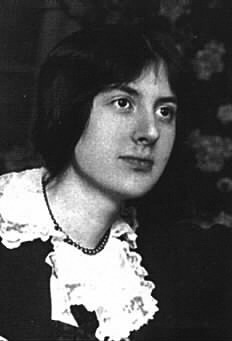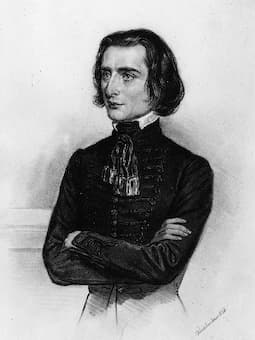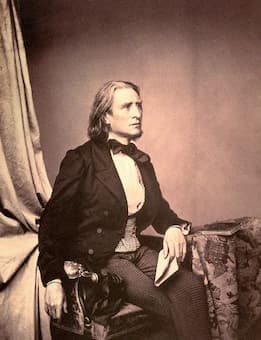
Classic FM met with Jamie Bernstein to discuss her father, the new West Side Story remake, and her familial-like relationship with the late Stephen Sondheim...
Jamie Bernstein is an author, writer, narrator, and the eldest child of the American composer-conductor, Leonard Bernstein.
Her memoir Famous Father Girl, published in 2018, shared an intimate, undisguised portrait of her father as the musical genius, but also complex human being that he was.
Now with her father’s musical, West Side Story brought to the big screen for the second time in multi award-winning fashion, we sat down with Jamie to discuss the musical that she and her younger brother and sister, Alexander and Nina, refer to as the “fourth sibling”.

West Side Story
“I couldn’t wait to see the new film!” Jamie told Classic FM. “My brother and sister and I finally got to go to a private, very COVID-conscious screening last April, and we just were crazy for it.
“What was really fantastic for us was that musically, it was the best possible outcome. It was just stellar all the way through and filled with superstar performers.”
The high-profile music team working on the 2021 remake was made up of the talents of both the New York Philharmonic and the Los Angeles Philharmonic. They were directed by Venezuelan conductor Gustavo Dudamel, and the Academy Award-nominated composer David Newman, was the orchestrator and arranger.
“How I wish my dad was around to see this film, to hear this film and hear how his music sounds in it,” Jamie revealed.
“I also so wish that my father and Steven Spielberg could have met each other because they have a lot in common. They’re both incredibly warm-hearted people. They love to reach out and communicate and make connections and they’re really peas in a pod.
“I’m sorry they didn’t get to meet in real life, but they sort of did meet through the film.”

Jamie also told Classic FM about her familial-like relationship with the late composer , who wrote the lyrics to West Side Story.
“Steve was always there, just like West Side Story was, and for the exact same reason – because he was there working with my father. But he wasn’t just a work colleague, he was really a friend of the whole family.
“He would come and visit us in the summers, come out to our country house in Connecticut for the weekend. He really hung out with us. For my siblings and I, he was like another uncle.
“We were always a little careful around Steve because you wouldn’t want to rile him; he was a scary dude when we were young! But, interestingly enough in the last 20 years of his life, he kind of mellowed out and became genuinely avuncular and was very affectionate with the three of us. He often invited us over to his house to have dinner or play anagrams and word games, which we all love so much. We got to really hang out with him in this very relaxed and affectionate way quite a lot in the last years of his life.”

Sondheim was also at the pre-screening of West Side Story in April. “He actually had his own private screen with nobody else there because they were so keen to keep him safe from COVID, since he was 90,” Jamie adds.
At the end of the screening, Sondheim told Steven Spielberg how much he adored the film. He thought it was sensational. He was over the moon and he said to Spielberg, “I can't wait to see it at the public premiere when there's a full audience”.
But Sondheim died three days before that New York premiere, so he missed it.
“It was heartbreaking, we missed him so badly,” Jamie says sadly. “It was very bittersweet that night.”

One of Sondheim’s most emotive examples of his lyric-writing is in the song ‘Somewhere’ from West Side Story.
In the Broadway musical, it’s part of a dream-like sequence. In the 1961 film, it’s a duet sung between Tony and Maria as they long for a place where they can be together. However, in the 2021 remake, the song is sung solo by the character Valentina (played by Rita Moreno) on a generational level, as the older character mourns the missed opportunities for the young people in the film.
“‘Somewhere’ has taken on a personality in the world all unto itself,” Jamie tells Classic FM, “because it’s become such an anthem and expresses all our collective longing for a world where we take care of each other and are kind to each other. A world where love rises above hatred, which is what West Side Story and Romeo and Juliet are about.
“It’s not only in Sondheim’s lyrics, but it’s in my father’s music too.
“Musically, the great thing about West Side Story is that it doesn’t need to go in a box,” Jamie concludes.
“The whole fun of West Side Story is that it has elements of musical theatre, elements of opera, bebop jazz, Latin Caribbean; all of these genres are mixed together into a work of art that really redefined the context in which it was originally presented on Broadway.
“It just exploded the boundaries in such a wonderful way that really nobody could go back after that.”

Family and the new Bradley Cooper film
It is clear from the way Jamie speaks about music that she is incredibly passionate about the art form, but also gifted with an innate understanding of musical theory, thanks to her upbringing.
“As children, my brother, sister and I all took piano lessons”, Jamie told Classic FM, “but we didn’t really like our piano lessons. We never practised except in that sickening half hour before the piano teacher came to the house on Tuesday afternoons, when we tried to remember what we were supposed to have practised last week.
“My brother used to get stomach aches right before his piano lesson. And he says that to this very day, around 4pm on a Tuesday afternoon, he still gets a similar feeling,” Jamie laughs.
“Aside from the piano, the three of us are very musical. We’re always talking about music and singing along to whatever comes up on the radio – we feel music really viscerally.
“But because of this bright light that we lived under, we couldn’t even imagine doing it ourselves. Well, I did try, but I never could shut off the voice in my head that would say ‘Who do you think you are and what do you think you’re doing?’.”

The ‘bright light’ of her father will be illuminating the big screen once again, but this time in the form of an upcoming film about the composer, and his family, starring Bradley Cooper.
“We’re in regular communication with Bradley Cooper, because he’s very interested in achieving a kind of authenticity about [Leonard Bernstein].
“He’s starring in the film, co writing the screenplay and he's directing. He’s doing everything. He’s a total immersion guy, and he’s just maniacally immersed in all things Leonard Bernstein, so he’s asking us lots of questions all the time and has been very generous with his whole process.
“It’s incredibly strange and disconcerting, to have this young movie star portraying our dad at several ages. Bradley portrays my dad when he was in his 20s, 40s, 50s, and then in his final years, too, so he’s going to be going through many transformations.
“It’s not a biopic, strictly speaking, it doesn’t tell the story of Leonard Bernstein from birth to death – it’s not that kind of a film at all. In fact, it’s a portrait of our parents’ marriage. It’s about something very specific and very personal for us. We’re really struck by the fact that this was the aspect of the story that Bradley decided to focus in on and we’re very excited about Carey Mulligan as our mother Felicia; I promise you she is going to send it to the moon in a rocket.
“It’s going to be amazing.”

Jamie is due to speak at the Jewish Music Institute on 10 March 2022 about her father, alongside speakers representing other Jewish musical figures including, Yehudi Menuhin.
“It’s important we never miss the opportunity to celebrate them,” Jamie says ahead of her appearance at the fundraising gala.
“My father’s parents were both from Ukraine, so these last few weeks, I've had some very intense feelings about where we all came from.
“Back at the turn of the 20th century, which is when my grandparents finally had to emigrate, because there were pogroms and terrible anti semitism. At that time, the country was not a very welcoming environment for Ukrainians who were Jewish.
“There are so many Jewish musicians in the world whose ancestors came from Ukraine. That whole area produced incredible prodigies and geniuses who were able to get out into the world and share their art with the rest of us.
“Today my heart swells with hope that everyone in Ukraine will be okay. There’s a great line from my dad, about what music does in times like these.
“After President Kennedy was assassinated in 1963, my father conducted a performance of Mahler's Second Symphony, the resurrection, which was broadcast nationally as a gesture of comfort to everyone.
“A couple days later he was speaking about the circumstances and my dad said: ‘This will be our reply to violence. To make music more intensely, more beautifully, and more devotedly, than ever before.’”



















